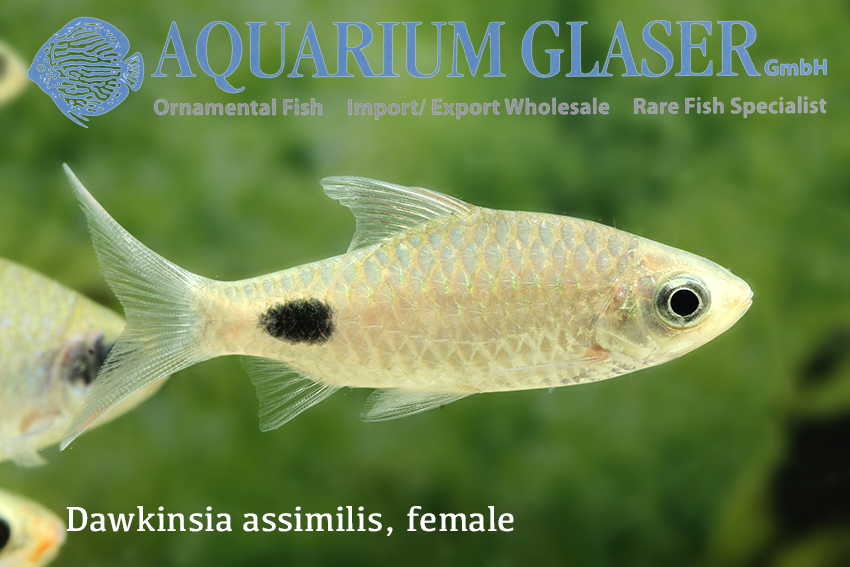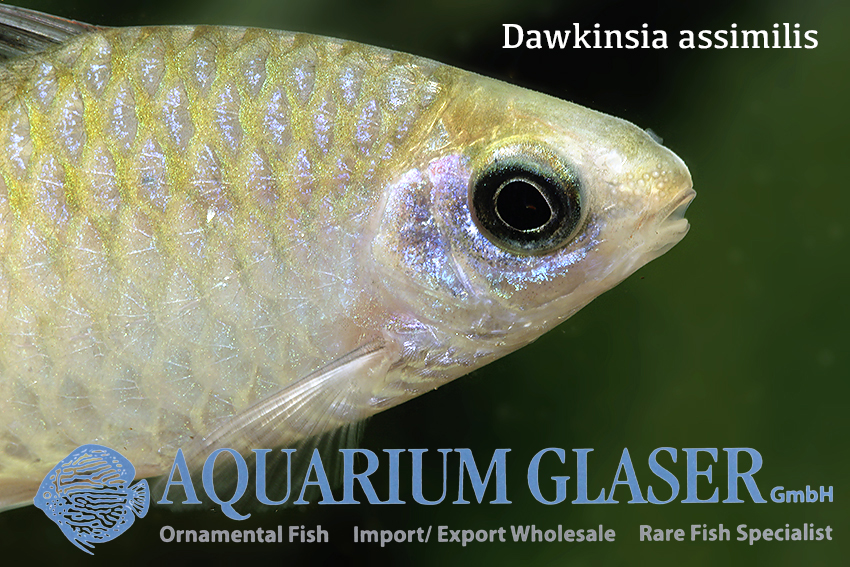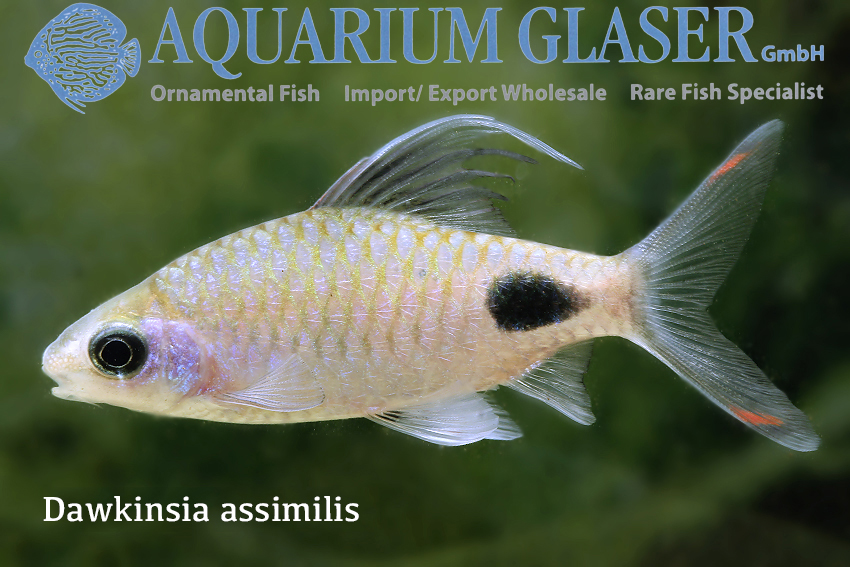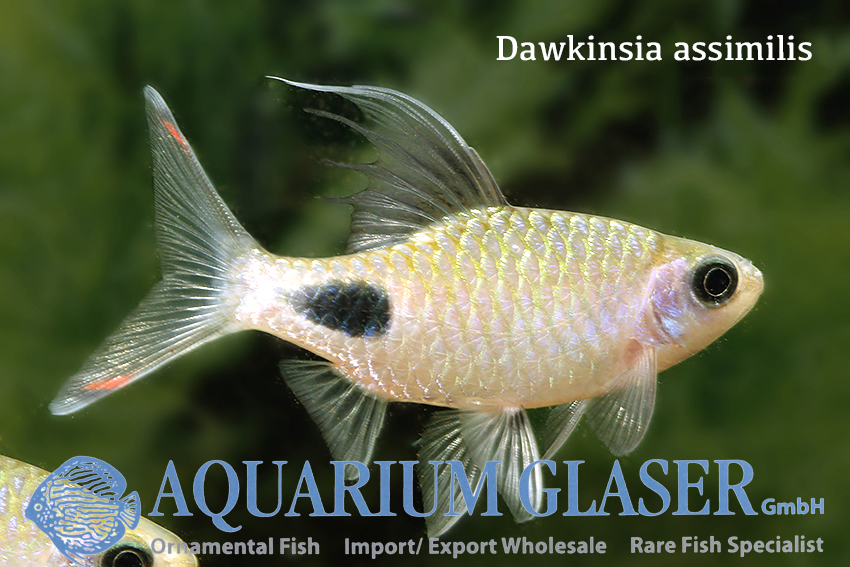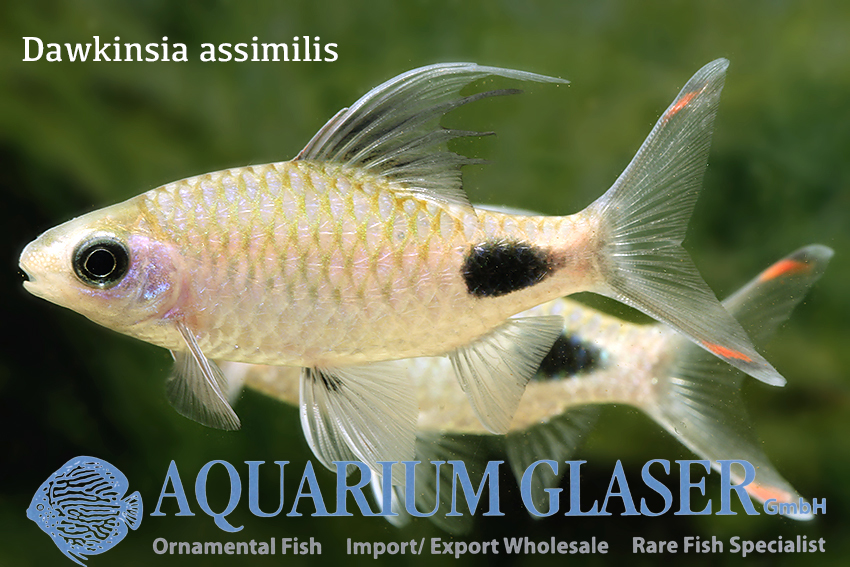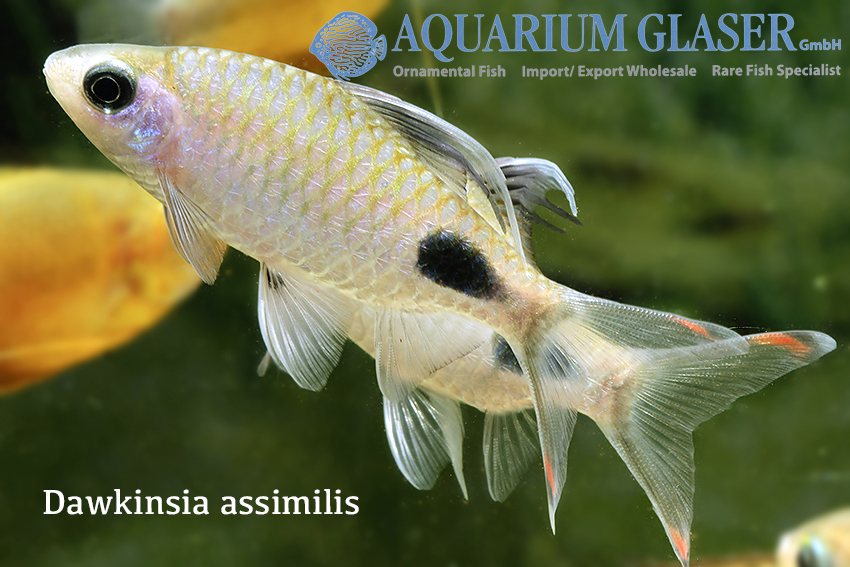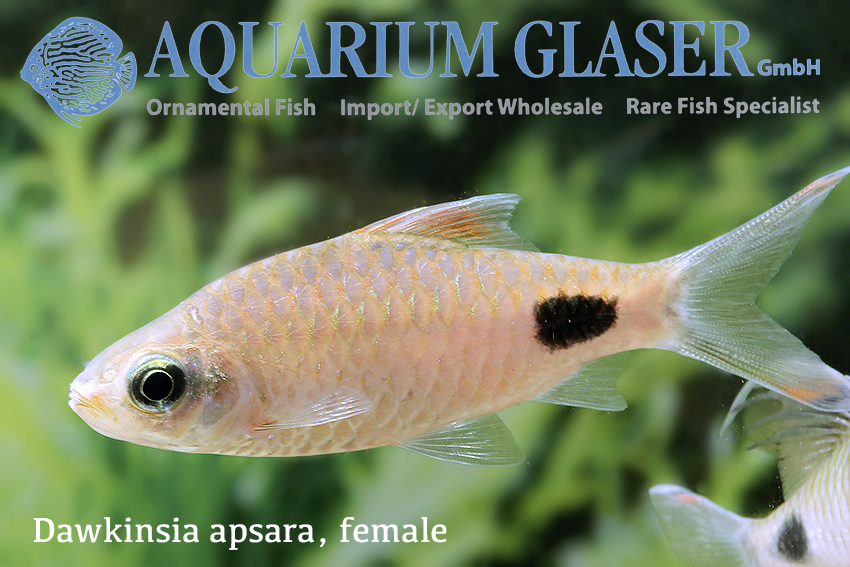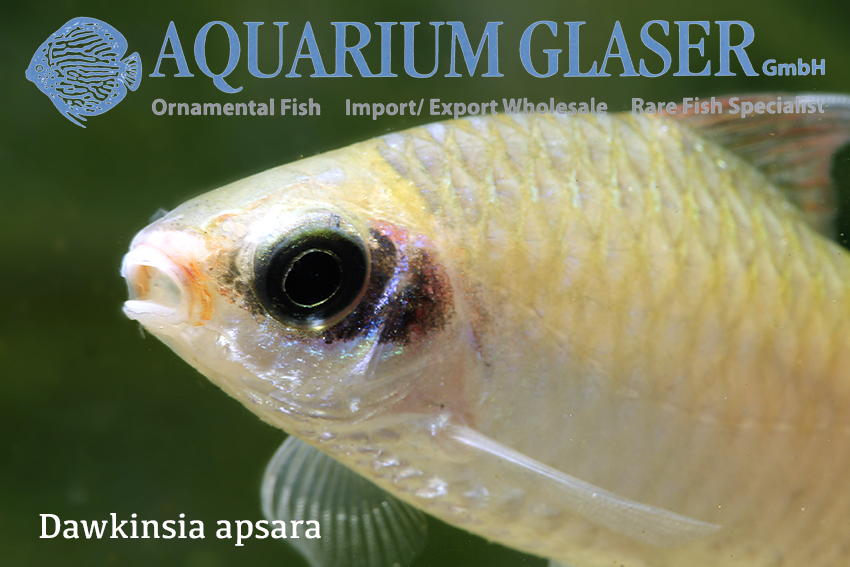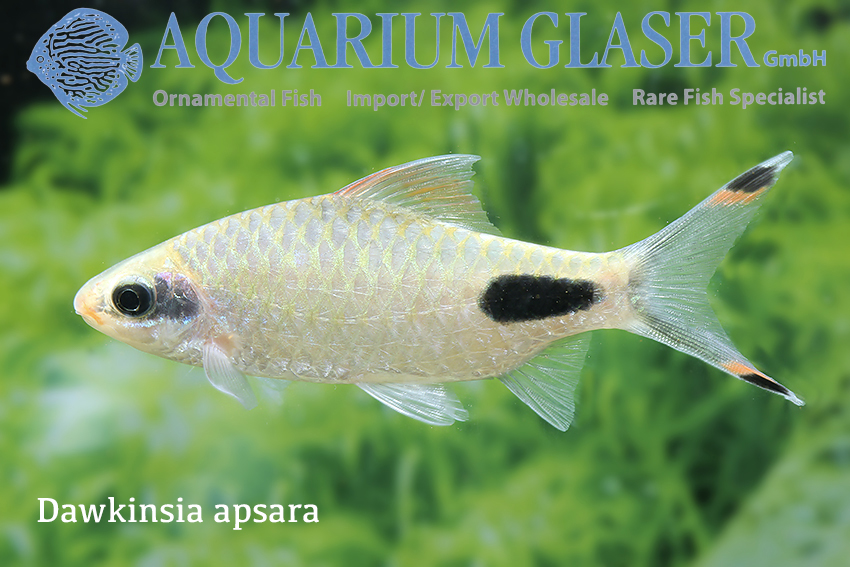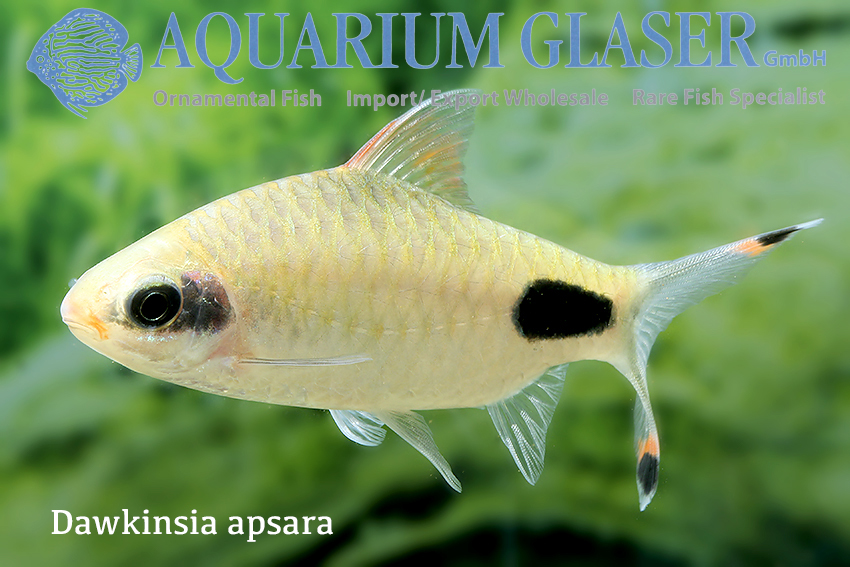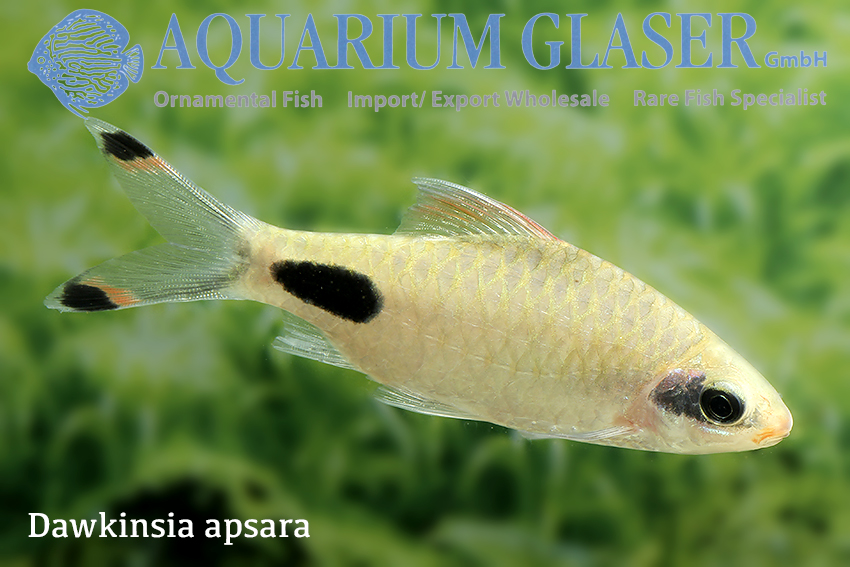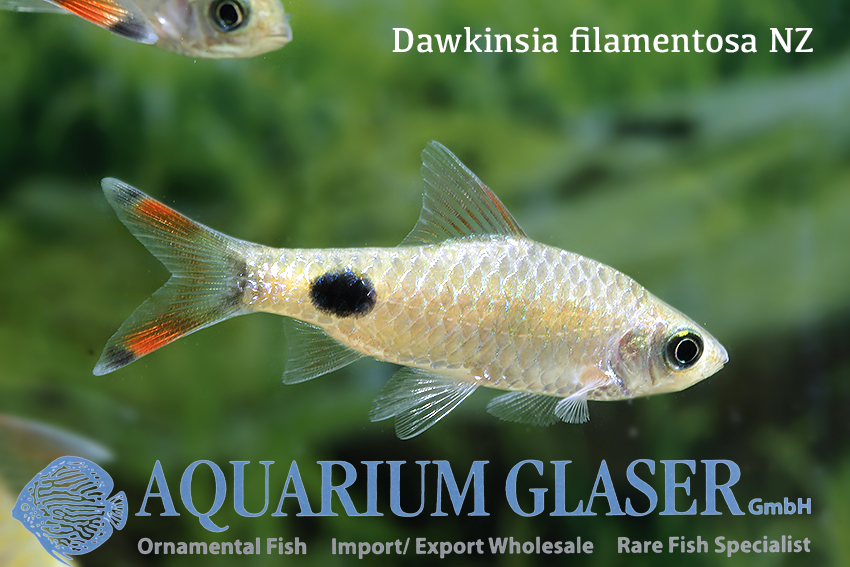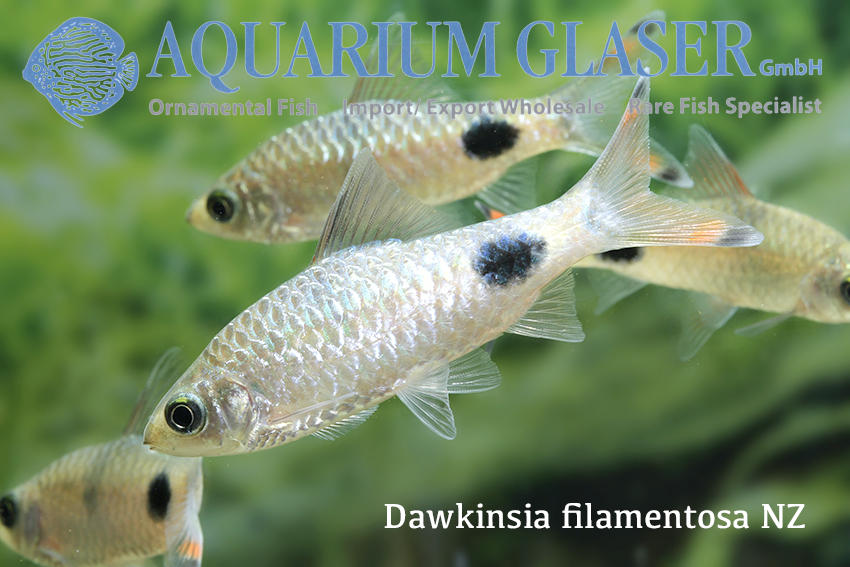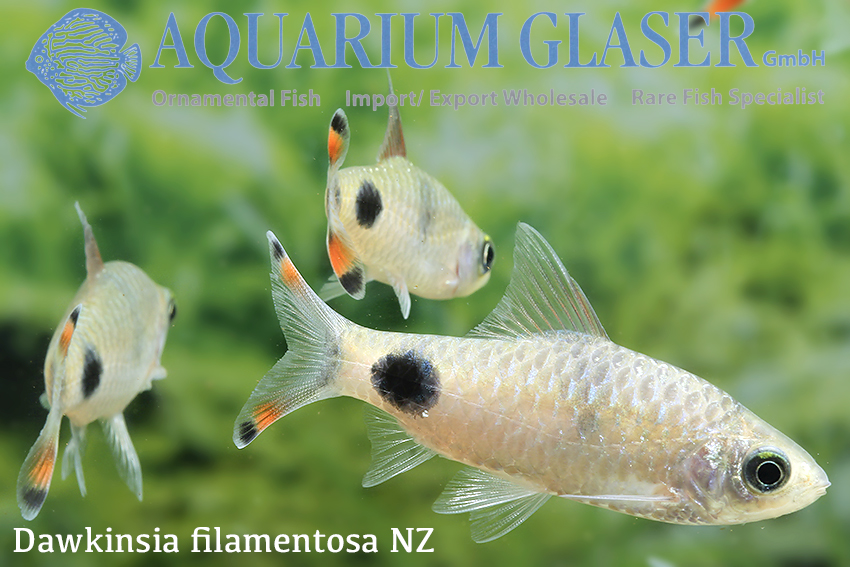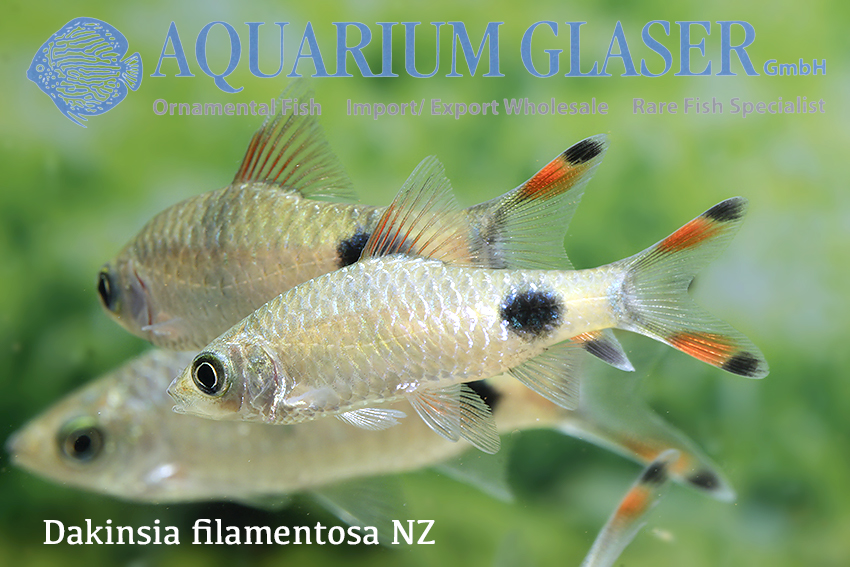The so-called filament barbs of the genus Dawkinsia were assigned earlier all together to the types Barbus or Puntius. They received the popular name because the back-fin of the males with its long fin-rays. The differentiation of the species is extraordinarily tricky, although several scientists tried in the last decades at them. Only a few weeks ago, a new study on filament barbs appeared, in which three new species are described and in a DNA-based phylogeny, also published only a few weeks ago, it was found that the red-striped topedo barbs (Sahaydria denisonii and S. chalakkudiensis) cannot be distinguished from Dawkinisia on a molecular level.
In the hobby, many filament barbs are only called Dawkinsia filamentosa or D. mahecola; the latter is particularly wrong because mahecola is a Puntius species that has nothing in common with the filament barbs except for the tail-root spot. P. mahecola has no markings at all in the caudal fin (filament barbs have a beautiful red-black marking in the caudal fin tips) and the males of P. mahecola do not get any extended dorsal fin rays either. P. mahecola is so colorless that it was or is practically never kept in an aquarium. Nevertheless, the name P. mahecola can hardly be eliminated from the trade at the moment, since an ornamental fish trade is not a museum business and the fish names in the merchandise management systems must be traceable for years. Particularly with species whose nomenclature is still subject to constant changes, new scientific findings are therefore very slow to establish themselves in the trade.
Dawkinsia assimilis was already described in 1849, but was seen as a synonym for D. filamentosa until the turn of the millennium. In a recent paper (Kateway et al., 2020), a neotype was defined in order to make the distinction possible (an original type apparently never existed), because it turned out that in the Indian state of Karnataka, where D. assimilis occurs, a second double species still exists. This double has been called “mascara barb” in the hobby so far – because of the dark eye mask. It was now described as Dawkinsia apsara.
We have now received wonderful wild catches of filament barbels from Karnataka, which are a mixture of D. assimilis and D. apsara. While adult males of both species can be easily separated, it is a completely different matter with the females. For this reason we cannot sort the animals. Apart from the fact that this would mean enormous stress for the fish, the result would be more than questionable.
In any case, these are magnificent fish, which with their maximum length of 12 cm (without caudal fin) are an enrichment for every larger aquarium with river character.
Of course these animals are not cheap; but we also have a alternative in stock: European offspring of the actual filament barb (Dawkinsia filamentosa) – if it is this species. Young animals of all filament barbs in the narrower sense cannot be distinguished from each other without knowledge of their origin.
For our customers: the wild Dawkinsia (6-8 cm) have code 369504, the offspring (3-4 cm) 369912 on our stocklist. Please note that we only supply the wholesale trade.
Literature
Katwate, U., J. D. Marcus Knight, V. K. Anoop, R. Raghavan & N. Dahanukar (2020): Three new species of filament barbs of the genus Dawkinsia (Teleostei: Cyprinidae) from the Western Ghats of India. Vertebrate Zoology v. 70 (no. 2): 207-233.
Text & photos: Frank Schäfer





